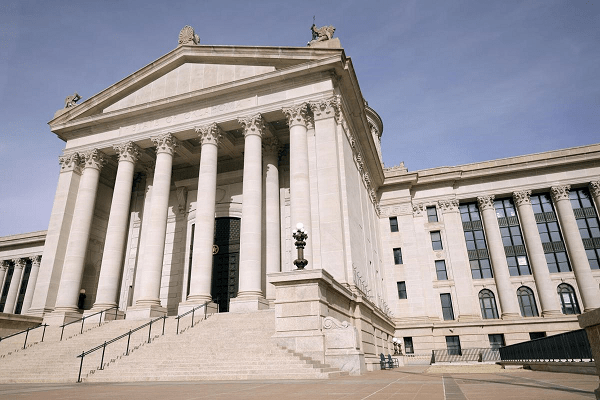
2.17.21 – Tulsa World – OKLAHOMA CITY
The state’s budget picture for the next fiscal year is improving and looking “much rosier than expected.”
Lawmakers will have an expenditure authority of slightly more than $9.6 billion in crafting the fiscal year 2022 budget.
The figure is an increase of nearly $1.2 billion, or 13.9%, from what officials believed the number would be in December.
The Board of Equalization met on Tuesday to discuss the figures legislators will use to produce a fiscal year 2022 state budget by the last Friday in May.
“Other states are waking up to the reality of huge budget deficits, but Oklahoma’s economy is strong thanks to the balanced approach we took to address the pandemic and the Legislature’s wise decision not to spend all of the authorized amount last year,” said Gov. Kevin Stitt, who chairs the board.
The $9.6 billion includes $6.7 billion in revenue available for appropriation — 95 percent of what will be available.
The figure also includes $1.1 billion in certified funds not previously appropriated.
“Projections are much rosier than expected,” said John Gilbert, an Office of Management and Enterprise Services budget analyst.
Since December, states gained a significant surplus from the federal $900 billion stimulus package, Gilbert said. It has injected money into emergency unemployment insurance programs, replenished the Payroll Protection Program and included $600 in payments to individuals.
In addition, employment is up in the state, while sector recoveries are mixed. Oil and gas is a bit down and recovering sluggishly, Gilbert said.
“The same with manufacturing, restaurants and bars, but overall we are seeing employment improving through fiscal year 2021 and 2022,” Gilbert said.
“And lastly, since December we are estimating that there will be modest gains in the oil price outlook for fiscal year 2021 and 2022,” he said.
While natural gas revenue projections will remain flat, oil has increased slightly, he said.
Officials have about a $3 increase in oil projected for fiscal year 2021 from the December estimate, lifting revenue to $33 million for fiscal year 2021 and by $24 million for fiscal year 2022, Gilbert said.
Officials don’t anticipate putting additional money into the state’s Revenue Stabilization Fund, he said.
COVID-19 “vaccines occurring and businesses recovering have the economy and revenues rebounding well enough to replenish reserves, set strong agency budgets and grant tax relief to continue kickstarting Oklahoma’s recovery,” said House Speaker Charles McCall, R-Atoka.
“Keeping the economy open is continuing to benefit Oklahoma, both for our citizens and now for our state budget.”
McCall, explained spokesman John Estus, has said he plans to unveil a tax relief package this session to make the state more competitive in the personal income and business tax climate.
Senate Appropriations Committee Chairman Roger Thompson, R-Okemah, said that while he is encouraged about the budget picture, he is still concerned about fiscal year 2023.
Oklahoma has seen a lot of federal dollars coming in, something Thompson does not anticipate will continue for fiscal year 2023, he said.
Thompson said he is not in favor of spending the entire budget amount. He said the state needs to pay for Medicaid expansion, which will cost between $164 million and $200 million.
